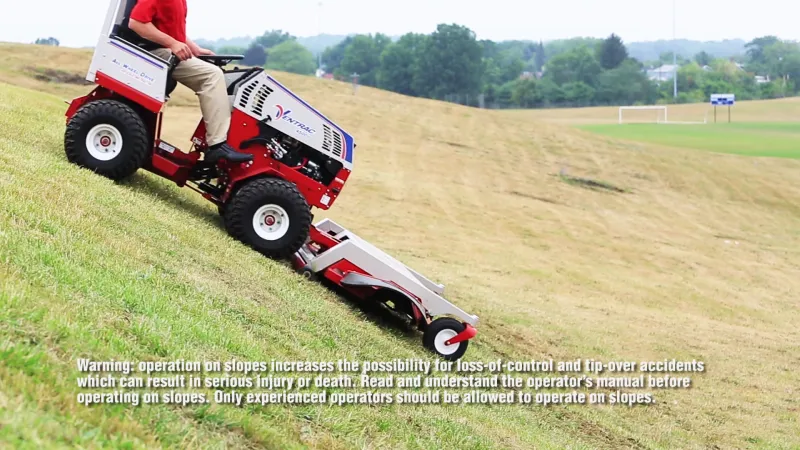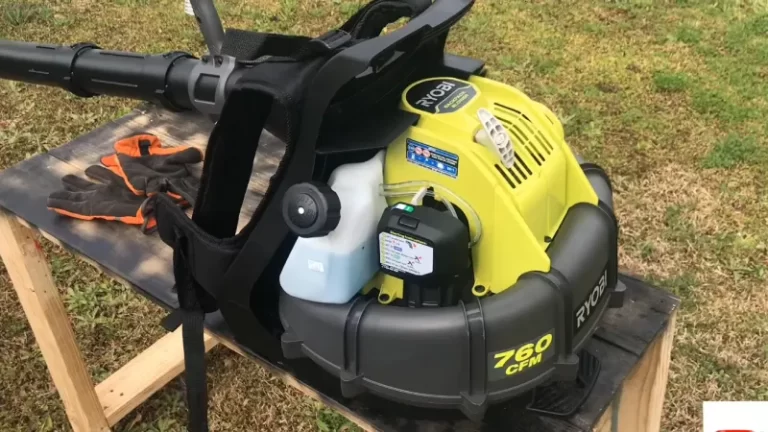15 Degree Slope Yard, Lawn Mower, and Maintenance

A 15 degree slope yard is a yard that has a significant incline, making it a challenging landscape to maintain. This type of yard can pose several challenges for homeowners, including erosion, water runoff, and difficulty mowing or planting.
Proper yard maintenance is essential for ensuring a healthy and visually appealing outdoor space, but it can be challenging to achieve on a sloped yard. In this article, we will explore some tips and tools for managing a 15 degree slope yard and discuss the importance of proper yard maintenance for the longevity and beauty of your outdoor space.
You'll Learn About
Understanding Yard Slope
Understanding the slope of a yard is essential to effectively maintaining it. Slope refers to the degree of incline of the land and is measured in degrees or as a percentage. A slope of 15 degrees is relatively steep and can pose challenges for yard work.
Measuring slope can be done in several ways. One common method is to use a digital inclinometer or a slope finder app on a smartphone. Another method is to use a transit or laser level to measure the change in elevation over a known distance.
It’s important to identify safe slope limits for yard work to prevent accidents and injuries. The Occupational Safety and Health Administration (OSHA) recommends that slopes steeper than 2:1 (29 degrees) should not be worked on unless they have been properly sloped or shored.
In other words, for every two units of horizontal distance, the slope should not exceed one unit of vertical distance. For a slope of 15 degrees, this equates to a slope ratio of approximately 4:1. It’s important to note that even if the slope is less than 2:1, it can still be hazardous if there is loose soil or rocks present.
Tools and Equipment for Yard Maintenance
Maintaining a 15-degree slope yard requires specialized tools and equipment to ensure efficient and safe yard work. Here are some essential tools and equipment for managing a sloped yard:
Mowers and Tractors for Sloped Yards
A push mower can be challenging to operate on a sloped yard. Instead, you may consider using a riding mower or a tractor with a mower attachment. These machines provide better stability and control on slopes, allowing you to mow your lawn without risking an accident.
Some models even have adjustable height settings, allowing you to cut your grass to the desired length without putting your safety at risk.
String Trimmers and Edgers for Edging Slopes
Trimming the edges of a sloped yard can be challenging, but a string trimmer or edger can make the job easier. These tools allow you to trim grass and weeds along the edges of your lawn, flower beds, and walkways. Choose a model with an adjustable handle, so you can comfortably trim at different angles and heights.
Safety Gear for Working on Slopes
Safety should be your top priority when working on a sloped yard. Wear sturdy work boots with good traction to prevent slips and falls. You may also consider wearing knee pads, gloves, and eye protection.
Additionally, consider using a safety harness or a rope to secure yourself when working on a steep slope.
By using the right tools and equipment and following safety precautions, you can maintain a 15-degree slope yard efficiently and safely.
Preparing and Maintaining a Sloped Yard
A sloped yard can present unique challenges when it comes to landscaping and maintenance. However, with proper preparation and maintenance, it is possible to have a beautiful and functional yard even with a 15 degree slope.
Soil preparation is an essential first step in managing a sloped yard. Loose soil can easily erode on a slope, so it is important to ensure the soil is compacted and stable. Consider using a soil compactor to create a stable base.
In addition, adding organic matter such as compost can help improve soil structure and drainage, which is especially important on slopes.
Planting and maintaining turf grass is another crucial aspect of sloped yard maintenance. It is important to choose grass varieties that are well-suited for your climate and soil type. When planting, consider using a grass seed mixture that includes fescue, bluegrass, and perennial ryegrass, which are hardy and can handle slopes.
Once the grass is established, it is important to maintain it properly, which includes regular mowing, fertilizing, and watering.
Erosion control is also important for sloped yards. Mulch and ground cover plants can help prevent soil erosion and promote healthy soil. Consider planting shrubs and other ground cover plants that have deep roots and can help hold soil in place.
Terracing or building retaining walls can also help reduce erosion and provide a functional and attractive space.
Overall, managing a sloped yard requires some extra effort and consideration, but with the right tools, equipment, and techniques, it is possible to have a beautiful and functional outdoor space. By following these tips for soil preparation, planting and maintaining turf grass, and reducing erosion, you can have a yard that is both safe and enjoyable for years to come.
Special Considerations for Sloped Yards
Special consideration is necessary when dealing with sloped yards, and proper management is essential to prevent water run-off, drainage issues, and soil erosion. Here are some key tips to address these concerns:
Dealing With Water Run-off on Slopes
Slopes can be a challenge when dealing with water run-off, especially during rainy seasons. To avoid water run-off, it is best to plant vegetation on slopes to absorb and slow down water flow. You can also create a swale, which is a shallow depression in the ground that collects and redirects water away from the slope.
Addressing Drainage Issues on Slopes
Slopes can also present drainage problems, which can lead to pooling water and soil erosion. To address drainage issues, it is best to install a drainage system like a French drain, which is an underground trench filled with gravel and a perforated pipe that redirects water away from the slope.
Preventing Soil Erosion and Slope Stabilization
Slope stabilization is essential to prevent soil erosion and ensure the longevity of the slope. Planting vegetation is one of the best ways to stabilize a slope, and it can help reduce the impact of rainwater on the slope. Retaining walls can also be built to prevent soil from sliding down the slope.
Proper maintenance and management of sloped yards are crucial to avoid water run-off, drainage issues, and soil erosion. By following these tips, you can ensure your yard remains healthy and beautiful for years to come.
Safety Tips for Working on Sloped Yards
Maintaining a sloped yard can be challenging, especially when it comes to safety. Working on a slope requires additional safety measures to prevent accidents and injuries. Here are some safety tips for working on sloped yards:
General Safety Guidelines for Yard Work on Slopes
- Always wear appropriate safety gear, including non-slip shoes, gloves, and eye and ear protection.
- Do not work on slopes in wet or icy conditions.
- Avoid working on slopes during high winds or storms.
- Be cautious when walking on slopes, especially when they are wet or slippery.
- Avoid over-exertion, and take frequent breaks.
Safety Tips for Using Equipment on Slopes
- Only use equipment that is designed for use on slopes, such as mowers with wide bases for stability.
- Make sure all equipment is in good working condition before use.
- Use caution when using string trimmers and edgers, as they can throw debris and rocks.
- Use a harness or safety line when operating equipment on steep slopes.
Precautions to Take When Mowing on Steep Slopes
- Always mow across the slope, not up and down.
- Use a self-propelled mower with large, wide wheels for better traction.
- Avoid sudden turns or stops, as these can cause the mower to tip over.
- Never mow a slope that is too steep for your equipment or abilities.
By following these safety tips, you can help prevent accidents and injuries while maintaining your sloped yard. Remember to always prioritize safety and take extra precautions when working on slopes.
Final Words
A 15 degree slope has a slope percentage of 26.8% and rises roughly 36 inches over every 10 feet. To calculate the slope in percent for any distance, you can use the formula % Slope = (Rise x 100%) / Run. Slope performance varies for robot lawn mowers, with models available to handle slopes between 15% and 45% (8.5 degrees to 24 degrees). You can store lawn mowers in crawl space easily.

